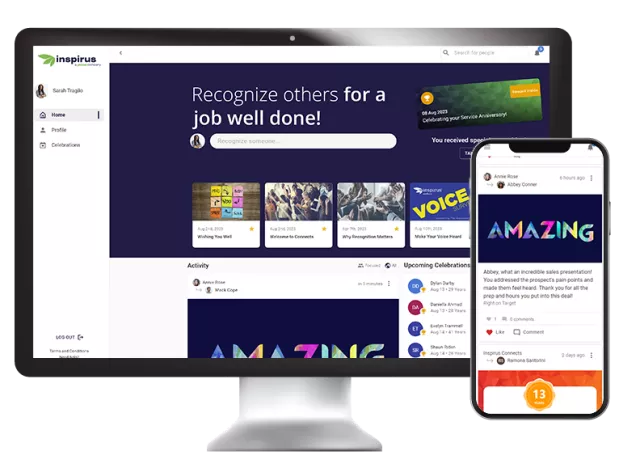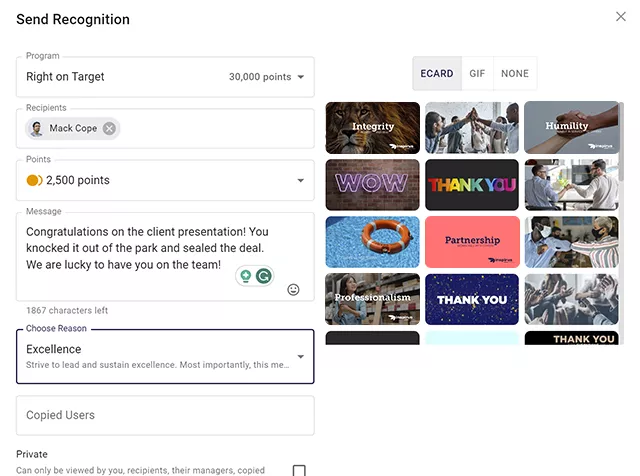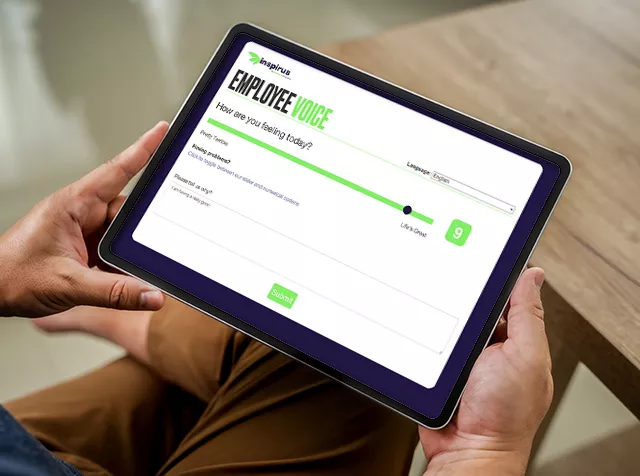What is the key to reducing turnover?

These strategies will boost both engagement and retention in the workplace.
The tidal wave of job-hopping and job-quitting of the past few years – the “Great Resignation,” as it became known – is starting to ease. Employees aren’t leaving in quite the same droves as they once were.
But that doesn’t mean that employee engagement and retention is a guarantee.
A culture shift occurred with the social and economic upheavals in the pandemic. What employees want from their workplaces and what they expect from their employers have changed – recognition, work-life balance, community and job satisfaction all rank on the list of must-haves alongside compensation.
Employees who feel valued and appreciated are more likely to be engaged with their work. That commitment and satisfaction, in turn, make them more likely to stay.
- A record 50 million+ people quit in 2022. (Source: U.S. Labor Statistics)
- 49% of employees are open to leaving their current organization. (Gallup)
- Nearly six in 10 employees are disengaged at work. (Gallup)
When it comes to reducing employee turnover, recognition is one of, if not the, most powerful employee retention strategies.
Employee Retention Strategies Proven To Increase Engagement
There are a number of elements of employee retention, ranging from compensation to work-life balance. The following strategies are the building blocks of any strong retention program, ensuring that employees not only stay, but thrive in their roles.

#1 Offer Competitive Compensation Packages
Competitive salaries and benefits packages are essential to attracting and retaining top talent.
A paycheck isn’t the only thing that counts, but it provides the basis for other retention strategies to differentiate your workplace from others. Ensure that compensation packages align with industry standards to attract and retain skilled employees.

#2 Provide Career Development Opportunities
Employees are more likely to stay with an organization that offers opportunities for growth and advancement.
In fact, 94% of employees surveyed by LinkedIn Learning said they would stay longer with a company that invested in helping them develop new skills. From mentorship opportunities to workshops to education reimbursement, helping employees advance in their careers benefits everyone.

#3 Create a Recognition and Rewards Program
Compensation and career progression are fundamentals. They have to be in place for everything else to work.
But there’s a reason why recognition is at the heart of this guide. A thoughtful, intentional recognition program can do wonders for employee retention by immediately boosting engagement, improving company culture and driving productivity. Plus, it’s something you can immediately start implementing with the right strategies and tools.
- Strong employee recognition programs reduce turnover rates by 31%. (Source: Zippia)
- 80% of employees would work harder if they felt better appreciated. (Zippia)
- 29% of employees haven’t received recognition for good work in over a year, if at all. (Zippia)
Here’s what you need to know about recognition as one of the key factors affecting employee retention.
Formal Versus Informal Recognition Programs
Recognition can take both formal and informal forms, each with its unique advantages.
- Formal Recognition Programs: These are more structured and often include predefined criteria for acknowledgment. It involves monthly awards, performance-based bonuses or company-wide events.
- Informal Recognition: This type of recognition is more spontaneous, which can make it feel more personal. It includes day-to-day appreciation and acknowledgment of efforts from both peers and managers.
Managers play a pivotal role in recognizing and motivating their teams. Regular, meaningful recognition from them goes a long way in reinforcing the feeling that the company values each individual employee.
But that doesn’t negate the importance of fostering a culture of peer-to-peer recognition, where employees are encouraged to recognize each other’s achievements.
The Link Between Recognition and Employee Engagement
Employee retention is the lifeblood of any successful organization. It's not just about filling roles – it's about nurturing a thriving, involved and loyal workforce. That’s why engagement is such a key piece of the retention puzzle.
When employees receive recognition, it triggers positive emotions, such as pride and a sense of accomplishment. These emotions can boost self-esteem and motivation, leading to increased engagement in their work.

Improved Morale and Motivation
Employees who feel recognized and valued are more likely to stay motivated. High morale, in turn, contributes to a positive work environment that increases retention rates.

Increased Job Satisfaction
When employees feel appreciated, they view their work in a more positive light and are more satisfied with their roles. That means they are less likely to seek opportunities elsewhere.
The Return on Investment From Recognition
High turnover rates can be both financially and culturally detrimental to a company, leading to:
- Increased recruitment and training costs
- Opportunity costs of unfilled positions
- Loss of institutional knowledge
- Decreased productivity
- Lowered company morale
The importance of developing strategies for employee retention is mission-critical (and budget-critical!) for organizations.
- The cost of replacing an individual employee can range from one-half to two times that employee's yearly salary. (Source: Gallup)
- U.S. businesses lose one trillion dollars every year as a result of turnover.
And beyond turnover, there's another, subtler threat that can be equally damaging: the phenomenon known as "quiet quitting."

What is Quiet Quitting?
Quiet quitting refers to the silent disengagement of employees who remain in their roles but have mentally checked out. These employees may show up to work physically, but they have disengaged from their tasks, colleagues and the organization's goals.
The lack of effort or innovative ideas results in a stealthy drain on productivity and morale. That’s why focusing on employee engagement as one of the key factors affecting employee retention is so important. It’s truly essential for maintaining a dynamic, productive and happy workplace.
Tools and Resources for Implementing Recognition Programs
Providing an impactful recognition program requires an intentional strategy and thoughtful implementation. The good news is there are tools and technology that can support your program, making it easier to create impact.
Here's a closer look at some of the valuable resources that can empower your organization to create a culture of recognition and appreciation in everyday ways that boost retention.

Employee Recognition Software
Employee recognition software is the foundation of any modern recognition program. Solutions like Inspirus Connects Plus, Connects Social and Connects Celebrates streamline the process, making it easy to acknowledge and reward employee achievements both big and small.
From peer-to-peer recognition opportunities to points-based gift shopping, the user-friendly interface encourages daily actions that create community and a culture of appreciation. Plus, robust analytics allow you to track and measure the impact of recognition efforts in real-time.

Templates for Recognition Awards, Certificates and Communication
Crafting visually appealing recognition messages is a thoughtful way to highlight milestone moments like service anniversaries or accomplishments.
The Inspirus platform allows both managers and peers to send recognition, either publicly or privately, with messages animated with an eCard or GIF. Company branding reinforces the organization’s values and mission, reinforcing a sense of shared purpose.

Employee Survey Tools
Gathering feedback from employees is a crucial step in understanding their recognition preferences and needs, so that information can be harnessed to promote and improve company culture.
A solution like Inspirus Connects Plus has integrated digital survey tools, providing a convenient way to delve into employee sentiment and uncover opportunities for improvement. In partnership with The Happiness Index, more than a dozen pre-built surveys are available at your fingertips, covering topics from happiness to cultural health to engagement.
FAQ's About Employee Retention
Why is employee retention an issue?
Employee retention is important because high turnover rates can lead to high costs of replacing the departed employee, loss of institutional knowledge and decreased productivity. Turnover can harm an organization's financial and cultural health.
What are the 3 R's of employee retention?
The 3 R's of employee retention are Recognition, Rewards and Respect. These elements create a positive work environment that encourages employees to stay with an organization.
What increases employee retention?
Factors affecting employee retention include an effective recognition program, competitive compensation, career development opportunities and a positive work culture.
How do you measure employee retention rate?
Employee retention rate is typically measured by taking the number of employees at the start of a period, subtracting the number of employees who left during that period and dividing the result by the number of employees at the start. Multiply by 100 to express it as a percentage.
Other Helpful Resources on Employee Retention Strategies

Building Trust to Reduce "Quiet Quitting" and Turnover

Using Rewards and Recognition to Reduce Burnout and Anxiety
